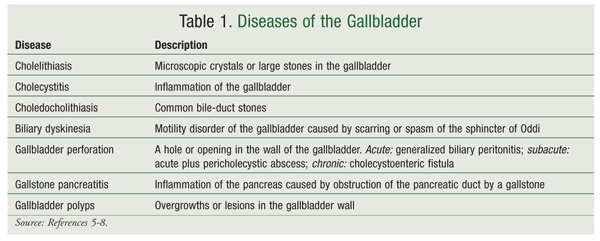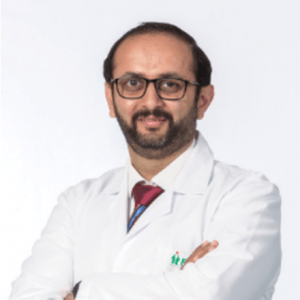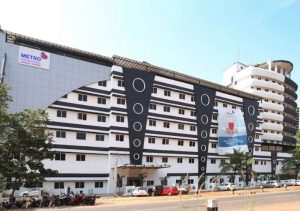Gall Bladder Transplant
Gall bladder transplant is one of the least talked about transplant surgeries. One would need to understand the organ itself to understand the reason for this. The gallbladder is a hollow organ that sits in the upper right abdomen. It is a pear-shaped organ with an opening into the cystic duct. The organ is part of the biliary system, which comprises the liver, gallbladder, and ducts. The biliary system is vital in bile production, storage, and secretion. In this article, we will discuss its structure, its functions, the diseases affecting it, and its transplant. Read More
Top Doctors For Gall Bladder Transplant Treatments
Top Hospitals For Gall Bladder Transplant Treatments
Gall Bladder Transplant
Table of contents
Overview
Gall bladder transplant is one of the least talked about transplant surgeries. One would need to understand the organ itself to understand the reason for this.
The gallbladder is a hollow organ that sits in the upper right abdomen. It is a pear-shaped organ with an opening into the cystic duct. The organ is part of the biliary system, which comprises the liver, gallbladder, and ducts. The biliary system is vital in bile production, storage, and secretion. In this article, we will discuss its structure, its functions, the diseases affecting it, and its transplant.
What is the structure of the gallbladder?

It is hollow, grey-blue in color, and it’s also pear-shaped. The gallbladder has a capacity of 50ml, and it is a storage organ for bile. The gallbladder can be divided into three sections, namely the body, the fundus, and the neck.
Fundus – this is the rounded and most distal portion of the gallbladder. It projects into the liver at the mid-clavicular line.
Body – this is the largest part of the gallbladder. It is located between the liver, the transverse colon, and the duodenum.
Neck – this is the tapering end of the gallbladder. It continues into the cystic duct, leading into the biliary tree. The neck also contains a mucosal fold called the Hartmann’s pouch. This is a common location for lodging gallstones which causes cholestasis.
The arterial supply of the gallbladder is via the cystic artery, which branches off from the right hepatic artery. Venous drainage of the neck is via the cystic veins, which then drain directly into the portal vein. The fundus and body drain into the hepatic sinusoids.
Parasympathetic, sympathetic, and sensory nerves innervate the gallbladder. Parasympathetic innervations provide the stimulation which contracts the gallbladder, leading to the secretion of bile into the cystic duct by the relaxation of the sphincter of Oddi. The circulating cholecystokinin controls the majority of this response as part of the gustatory response.
What is the function of the gallbladder?
The primary purpose of the gallbladder is the storage of bile. Bile helps the digestive system in the breakdown of fats. It is a mixture of cholesterol, bile salts, and bilirubin. The gallbladder is connected to the digestive system through the biliary tract (also called the biliary tree).
The biliary tree is a pipe-like system that carries bile from the liver to the small intestine. On impulse from the digestive system, the gallbladder releases stored bile into the biliary tract. The bile then travels through the tract until it enters the largest bile duct, the common bile duct. From the common bile duct, bile enters the duodenum, where it mixes with food. After a meal, the gallbladder is empty and shriveled, waiting for refilling.
What are the diseases affecting the gallbladder?
Just like any other organ, there are certain conditions and diseases which affect the gallbladder. The most common of them include
- Gallstones – these develop when substances in the bile or blood form hard particles, which then block the passageways to the gallbladder and bile ducts. Gallstones also develop when the gallbladder does not empty completely. They range from being as small as a grain of sand to as large as a golf ball. Some predisposing factors to this condition are; obesity, diabetes, old age, genetic issues, cirrhosis of the liver, and other liver diseases, etc.
- Cholecystitis – this is the most common type of liver disease; it can come either as acute or chronic inflammation. Acute cholecystitis is usually caused by gallstones but can also be a result of other conditions. It can come with pain, usually after a meal, and can range from dull aches to sharp pangs. Other signs of acute cholecystitis include fever, nausea, vomiting, and jaundice. Chronic cholecystitis occurs after several onsets of acute cholecystitis; the gallbladder shrinks and loses its ability to store and release bile. Nausea and abdominal pain are a couple of the symptoms.
- Cancer – this is rare; there are different types of cancers that can affect the gall bladder. They are usually difficult to treat due to their late diagnosis. Gallstones can be a predisposing factor to gallbladder cancer. Gallbladder cancer can also spread to neighboring organs like the liver, lymph nodes, and intestines. There may be no symptoms, or it might present as symptoms seen in acute cholecystitis.
- Abscesses – this can result from the infection of the gallbladder; pus subsequently develops due to immune action. Symptoms may include pain, fever as well as chills. It may be seen in diabetes patients, patients with heart disease, and cases of acute cholecystitis.

How are gallbladder issues diagnosed?
The diagnosis of gallbladder issues begins with a detailed medical history and physical examination. Some of the tests and procedures which can further aid diagnosis include
What are the treatments for gallbladder issues?
After the diagnosis, there are various ways to handle the condition, depending on the cause. They can range from simple solutions like lifestyle changes or serious procedures like surgery.
Lifestyle changes – these can handle some conditions that are aggravated by terrible lifestyles. Obesity and diabetes are conditions that increase the risk of gallstone formation. Losing weight and controlling diabetes can help lower the risks of the formation of gallbladder disease. Increasing exercise and physical activities can also decrease the level of gallstone formation. Quitting smoking and alcohol also helps in the resolution of gallbladder diseases.
Medical treatment – this can also be used in handling gallbladder diseases. Due to the pain, healthcare providers usually prescribe pain medication to reduce the discomfort felt. Drugs for nausea may also be prescribed to control the vomiting. In cases of bacterial infections of the gallbladder, anti-bacterial medication may be prescribed.
Surgery – this becomes necessary in the occurrence of repeated episodes of gallbladder inflammation. It can be referred to as cholecystectomy. This is also the most effective method of handling gallbladder disease. The surgery can be performed using laparoscopic methods, or the abdomen can be opened in order to access and remove the gallbladder. This surgery is quite common and carries minimal risk of complication.
What are the risks involved?
As earlier stated, the surgery is quite common and carries minimal risk of complication, but some of the complications that can be experienced include
- Bile leakages
- Bleeding
- Injury to neighboring organs
- Blood clots
- Infection
FAQ
Individuals can live perfectly everyday lives after a gallbladder removal surgery. The liver releases bile directly into the small intestine, which helps digest food normally. Gallbladder removal does not shorten the average life expectancy of individuals, contrary to popular belief.
From a technical point of view, it is definitely possible to transplant a gallbladder. It would be easier compared to other organs being transplanted, like the heart, kidneys even the liver. However, would there be any benefit to the transplant? Considering that an individual can have an everyday life after its removal, the answer would definitely be negative.
The gallbladder is not an essential organ, and the body can find ways of bypassing its function. Also, the transplanted gallbladder may not get innervated, which may cause it not to actually perform its function. Another problem with gallbladder transplanting would be the immune suppression required in order for the organ not to be rejected. This leaves the patient open to risks of infection, and all for an organ that they can do without. It would be unethical for any surgeon to carry out a gallbladder transplant.
“Medical Advice Disclaimer:
DISCLAIMER: THIS SITE DOES NOT PROVIDE MEDICAL ADVICE OR OPINION:
The information provided in this article or website by way of text, illustration, graphics, Images or any other form in this article or website is provided for informational purposes only. No information or material provided on this site is meant to be a substitute for a professional medical advice. Please refer to your family doctor or specialist in that field for any medical condition, diagnosis and treatment. Do not delay in contacting a professional on account of something you have read in this article or on this website.”
































